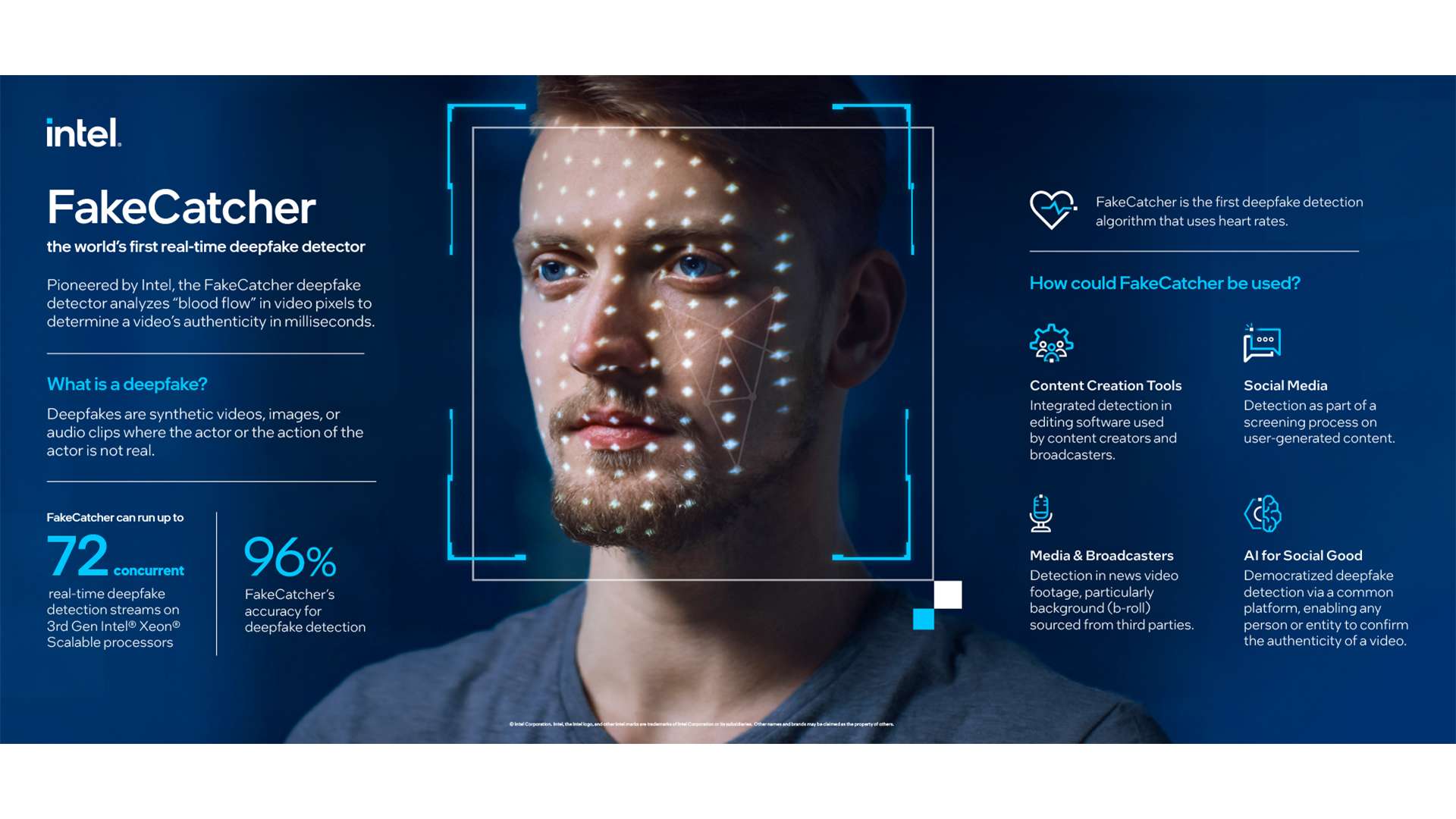
What’s New: As part of Intel's Responsible AI work, the company has productized FakeCatcher, a technology that can detect fake videos with a 96% accuracy rate. Intel’s deepfake detection platform is the world’s first real-time deepfake detector that returns results in milliseconds.
“Deepfake videos are everywhere now. You have probably already seen them; videos of celebrities doing or saying things they never actually did.”
How it Works: Intel’s real-time platform uses FakeCatcher, a detector designed by Demir in collaboration with Umur Ciftci from the State University of New York at Binghamton. Using Intel hardware and software, it runs on a server and interfaces through a web-based platform. On the software side, an orchestra of specialist tools form the optimized FakeCatcher architecture. Teams used OpenVino™ to run AI models for face and landmark detection algorithms. Computer vision blocks were optimized with Intel® Integrated Performance Primitives (a multi-threaded software library) and OpenCV (a toolkit for processing real-time images and videos), while inference blocks were optimized with Intel® Deep Learning Boost and with Intel® Advanced Vector Extensions 512, and media blocks were optimized with Intel® Advanced Vector Extensions 2. Teams also leaned on the Open Visual Cloud project to provide an integrated software stack for the Intel® Xeon® Scalable processor family. On the hardware side, the real-time detection platform can run up to 72 different detection streams simultaneously on 3rd Gen Intel® Xeon® Scalable processors.
Most deep learning-based detectors look at raw data to try to find signs of inauthenticity and identify what is wrong with a video. In contrast, FakeCatcher looks for authentic clues in real videos, by assessing what makes us human— subtle “blood flow” in the pixels of a video. When our hearts pump blood, our veins change color. These blood flow signals are collected from all over the face and algorithms translate these signals into spatiotemporal maps. Then, using deep learning, we can instantly detect whether a video is real or fake.
Why It Matters: Deepfake videos are a growing threat. Companies will spend up to $188 billion in cybersecurity solutions, according to Gartner. It’s also tough to detect these deepfake videos in real time – detection apps require uploading videos for analysis, then waiting hours for results.
Deception due to deepfakes can cause harm and result in negative consequences, like diminished trust in media. FakeCatcher helps restore trust by enabling users to distinguish between real and fake content.
There are several potential use cases for FakeCatcher. Social media platforms could leverage the technology to prevent users from uploading harmful deepfake videos. Global news organizations could use the detector to avoid inadvertently amplifying manipulated videos. And nonprofit organizations could employ the platform to democratize detection of deepfakes for everyone.
More Context: Learn more about Trusted Media research and about Intel’s commitment to advancing AI technology responsibly through a multidisciplinary approach with academia and industry partners.
Join Demir as she dives into the technology behind FakeCatcher, its key challenges and the opportunities this presents Intel and the industry in a Twitter Spaces event at 11:30 a.m. PST on Nov. 16.
Editor’s Note: This news post was updated on Nov. 15, 2022, with information to better describe the collaboration behind FakeCatcher.

 O-Sense
O-Sense







.png)

